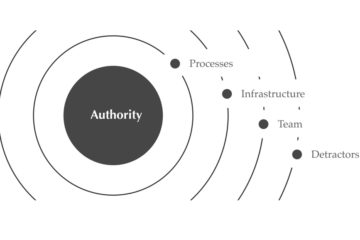A simple way to talk about “design,” (without it feeling like a buzz word)
Since Steve Jobs’ recognition with the re-emergence of Apple as a major player, “Design” has become fashionable. But the actual definition of Design can be a bit elusive. What does “design” actually mean in the modern commercial sense, and why is it so popular all of a sudden?
Design is not just what it looks like and feels like. Design is how it works. – Steve Jobs
Industry players from all verticals have since flocked to design firms such as IDEO and Frog to understand “Design Thinking“ and “Design Strategy,” and how bring these practices into their organizations. In technology, we’ve seen a huge push to hire armies of designers, acquire design companies (again and again), and create internal innovation labs.
In this article, I’ll briefly describe how design emerged as a profession unto itself and break design into two categories:
- Strategy: Practices that help us understand what to make and why.
- Craft: Practices that help us make things well.
When we understand the difference between these two aspects of design, we can be more thoughtful when planning projects that involve design teams.
“Design,” the verb.
Lets separate the verb design, with the Design Methodologies.
Simply put, “design,” is doing something on purpose. When we talk about an aspect of something being “by design,” we mean a particular aspect of something was created with purpose (as opposed to being manifest through accident or as a consequence of some other decision).
When something is “by design,” it was created with intent.
Almost any generative work (engineering, process management, curriculum planning) has a role or activity focused on design. Design is what happens when we make an outline before writing an essay or sketch a plan for the next football play.
Design Methodologies are lateral thinking practices focused on aligning the details of a product, service, or process with over-all intent.
If design is so common, and practiced by so many people in our day to day, why has the design industry and the role of designer emerged?
“Design,” the practice.
Design became a practice unto its own with the advent of mass production and commercialization during the industrial revolution.
In graphic design, specialists emerged with the printing of things like posters, newspapers, and other distributed paper artifacts for commercial use. Product design (industrial design) emerged a bit later when the mass production of physical goods grew efficient and producers needed new ways to compete. The reasons for this were three-fold:
- Standardization: As production became “mass” production, a manufactured object must appeal to thousands (or millions) of people. At the scale companies were able to produce, it became beneficial to invest resources early market validation to alleviate risk.
- Competition: When transactions costs (communication, transportation, etc…) decreased, it became more important to differentiate products in the market. This led to a focus on product features and styling.
- Product Complexity: As technology continued to improve, there started to become a larger gap between the knowledge of the consumer and the creator. Companies needed to shift to better understanding the mental models of their customers.
A mental model is an explanation of someone’s thought process about how something works in the real world. It is a representation of the surrounding world… (that) helps shape behaviour and sets an approach to solving problems and doing tasks. – Wikipedia
Strategy + Craft
It is easiest to break design practice it into two groups representing different techniques and activities. Generally speaking a “designer” has competencies in both, but focus in one area.
1. Strategy
Understanding users at the narrative level.
If your company is looking to new markets, to realize value in new ways from an existing base, or even to get a better understanding of how to gain efficiencies internally, look to strategic designers. These designers put their practices to work to understand problems at the macro level to propose, vet, and prioritize new solutions.
- You might hear:
- User Experience, Planner, Experience Strategy, Design Strategy, Design Thinking, Competitive Analysis, Generative Design Research
- They’re working on:
- Business Model Canvases, Lean Canvases, Design Thinking workshops, Customer Journey Maps, Design Research Scripts
- They’re reading about:
- Business strategy, Psychology, Systems Theory, Marketing and Branding Strategy, Product Lifecycle Management
Once a problem space begins to take shape, strategic designers help identify the types of craft-oriented designers to bring to the table.
2. Craft
Understanding users at the behavioral level.
Craftspeople are what we’ve traditionally pictured as “Designers,” and their talent lies deep knowledge of their specific crafts. They know the detailed processes of creating for their specific fields and work closely with engineering professionals (industrial designers with mechanical engineers, architects with civil engineers, interaction designers with programmers, etc…).
- You might hear:
- Industrial Design, Architecture, Graphic Design, Visual Design, Interior Design, Textile Design, Interaction Design, Fashion Design
- They’re working on:
- Sketches, Wireframes, Scematics, CAD models, Brand Guidelines, Mock-Ups, Style Guides, Color Standards, Logo Designs
- They’re reading about:
- Color theory, the gestalt principles, art and the work of other designers in their field.
The role of design today
In the digital age, design is growing more important in all sectors of business. For enterprise tools and B2B interactions, well crafted interfaces and processes boost efficiency in a number of ways. In the consumer space, brands fight harder every day for mind-share in the attention economy requires coordination across the physical and digital landscape.
Attention economics is an approach to the management of information that treats human attention as a scarce commodity, and applies economic theory to solve various information management problems.
As these challenges grow in complexity, we will continue to see a need for design strategy in particular across all areas.

